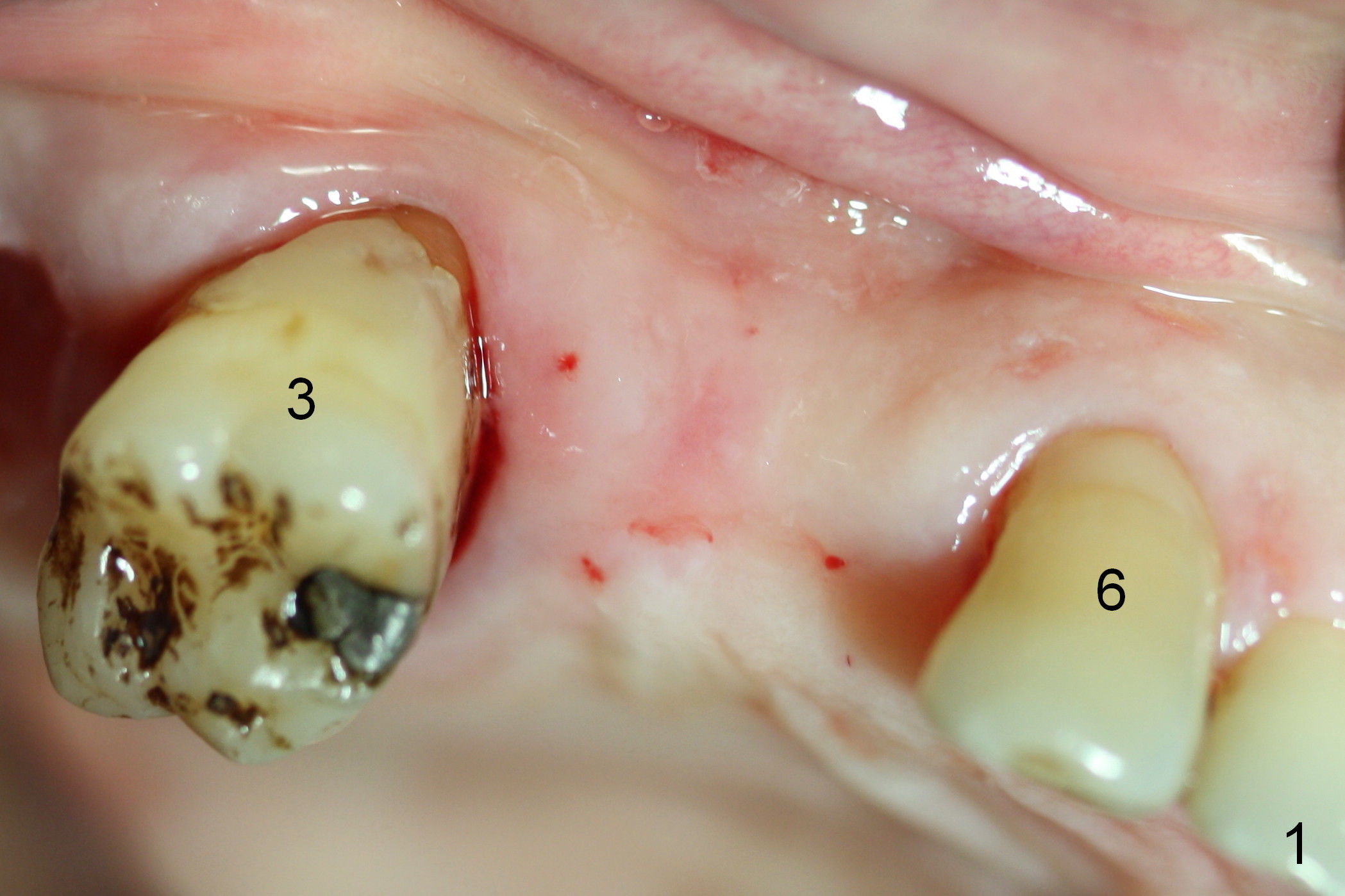
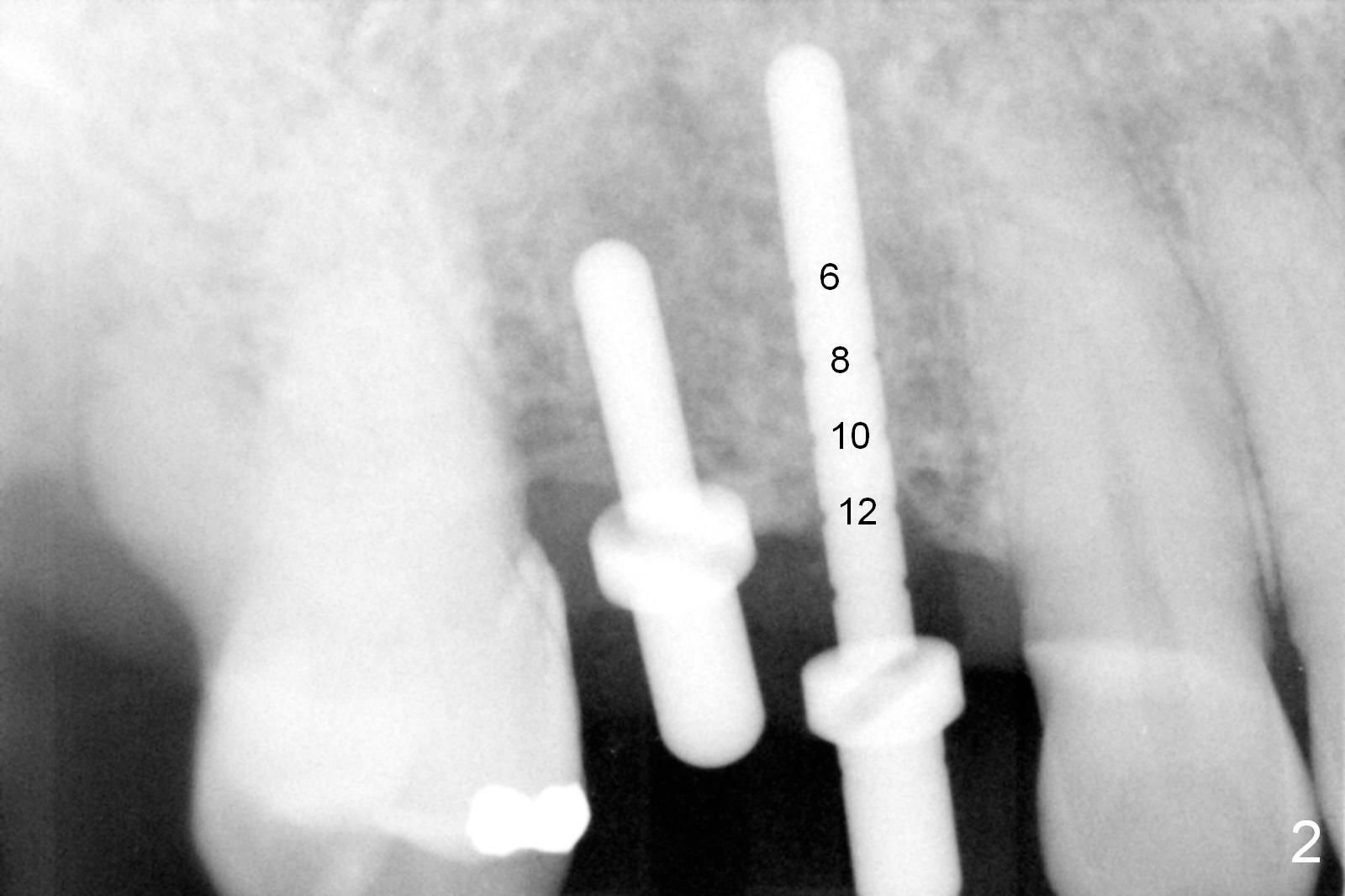
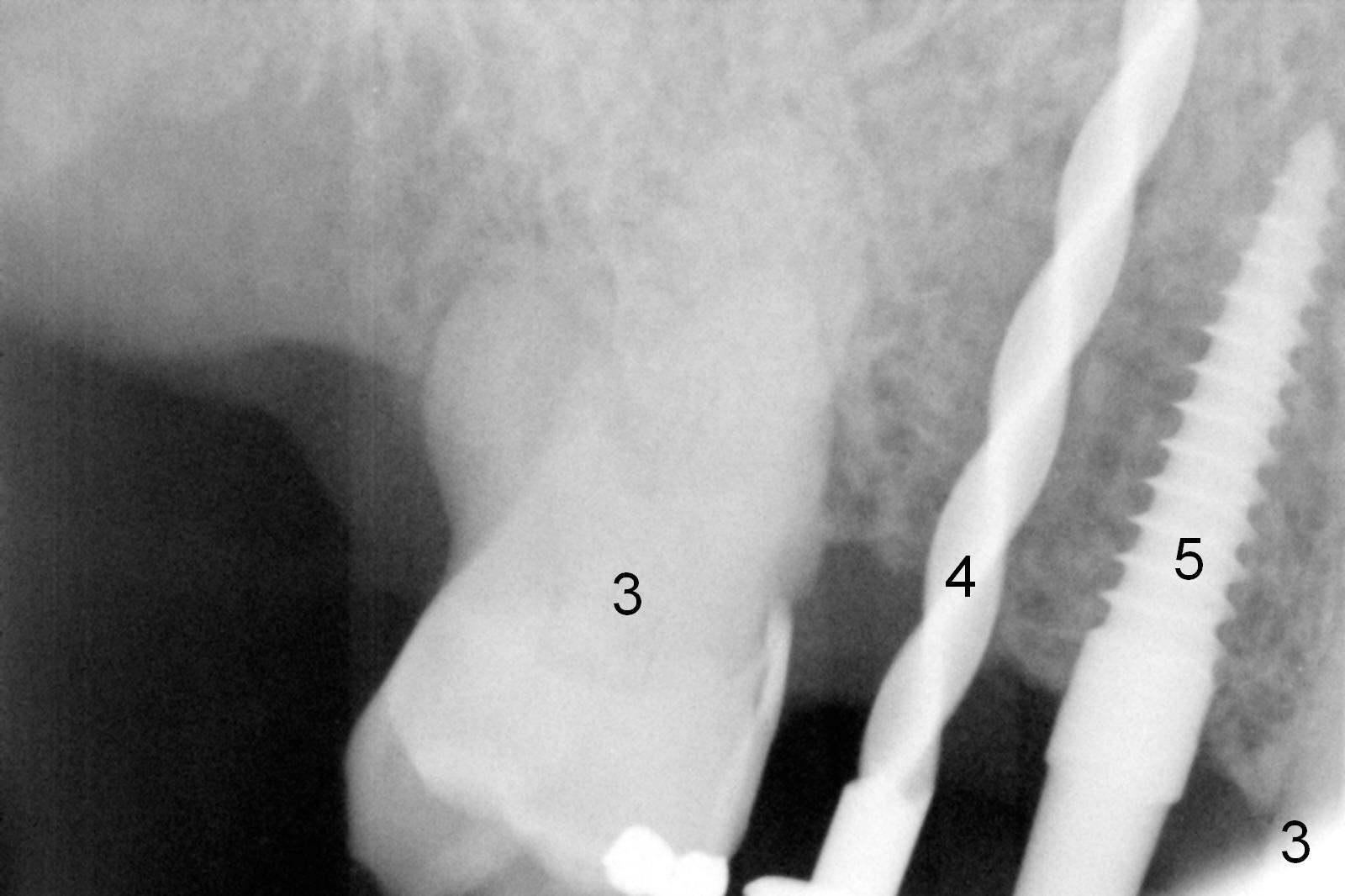
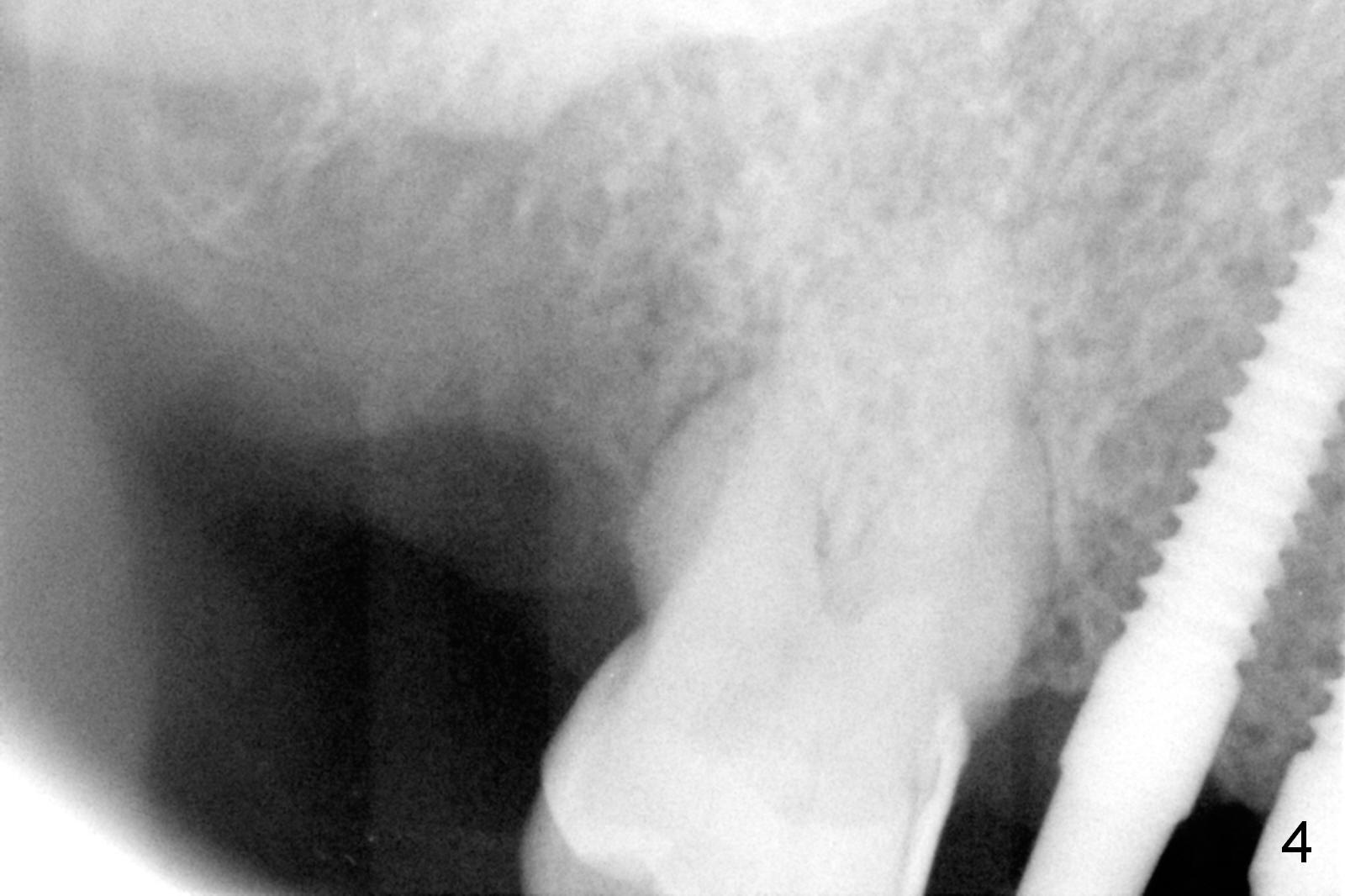
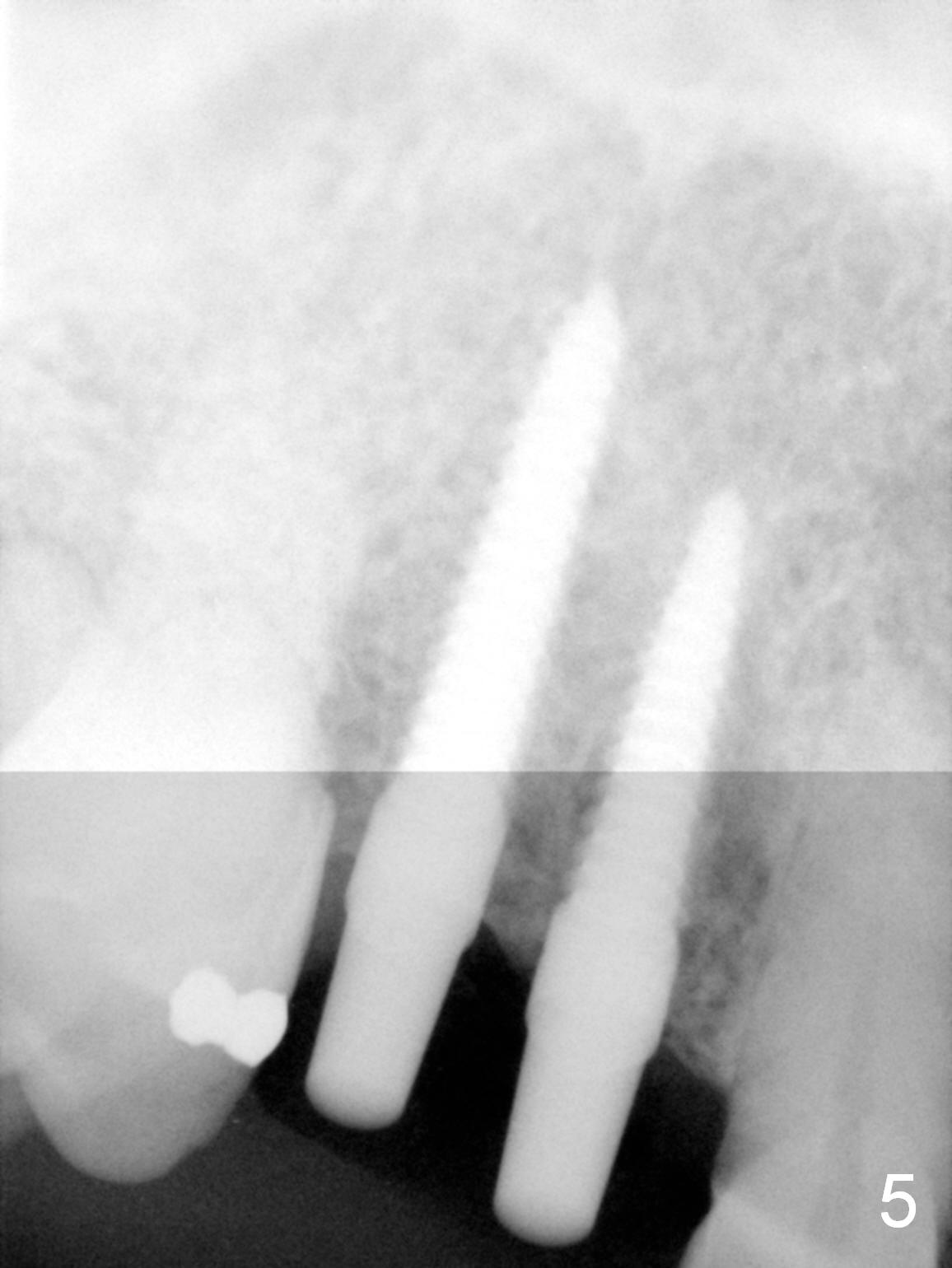
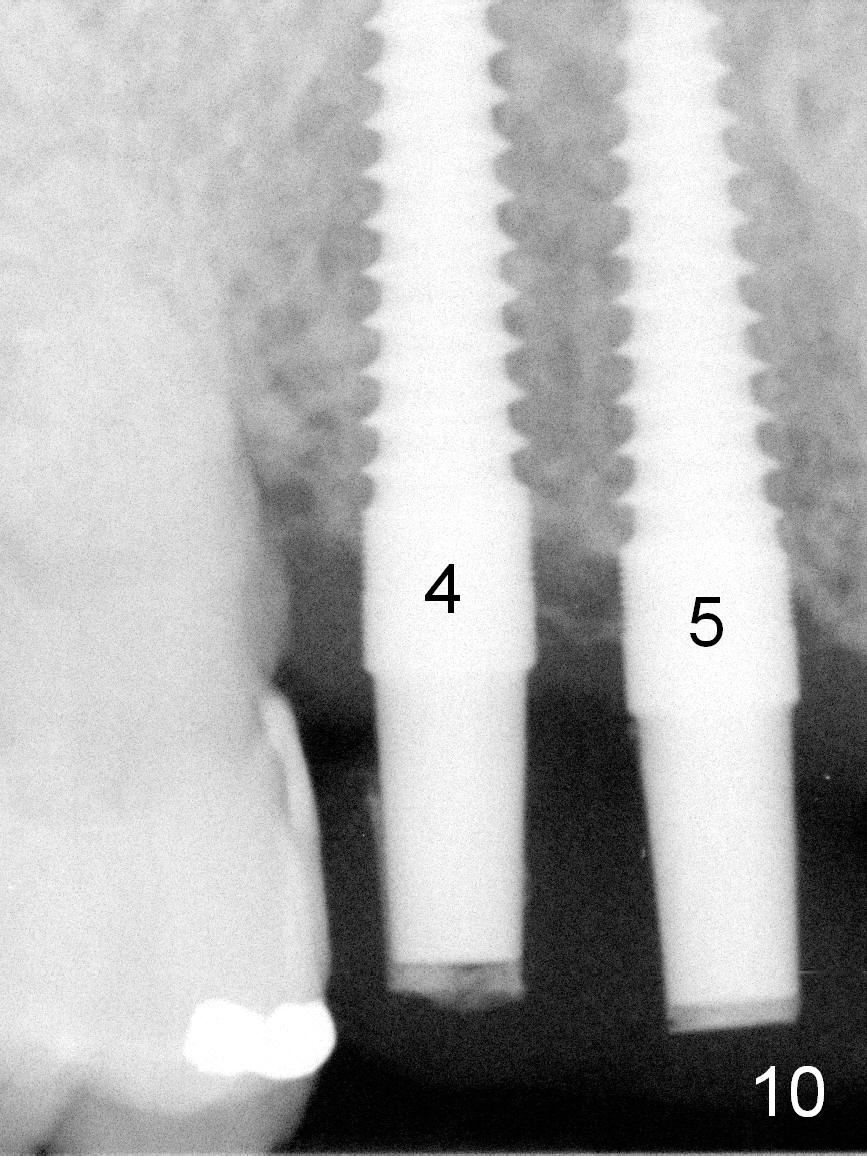
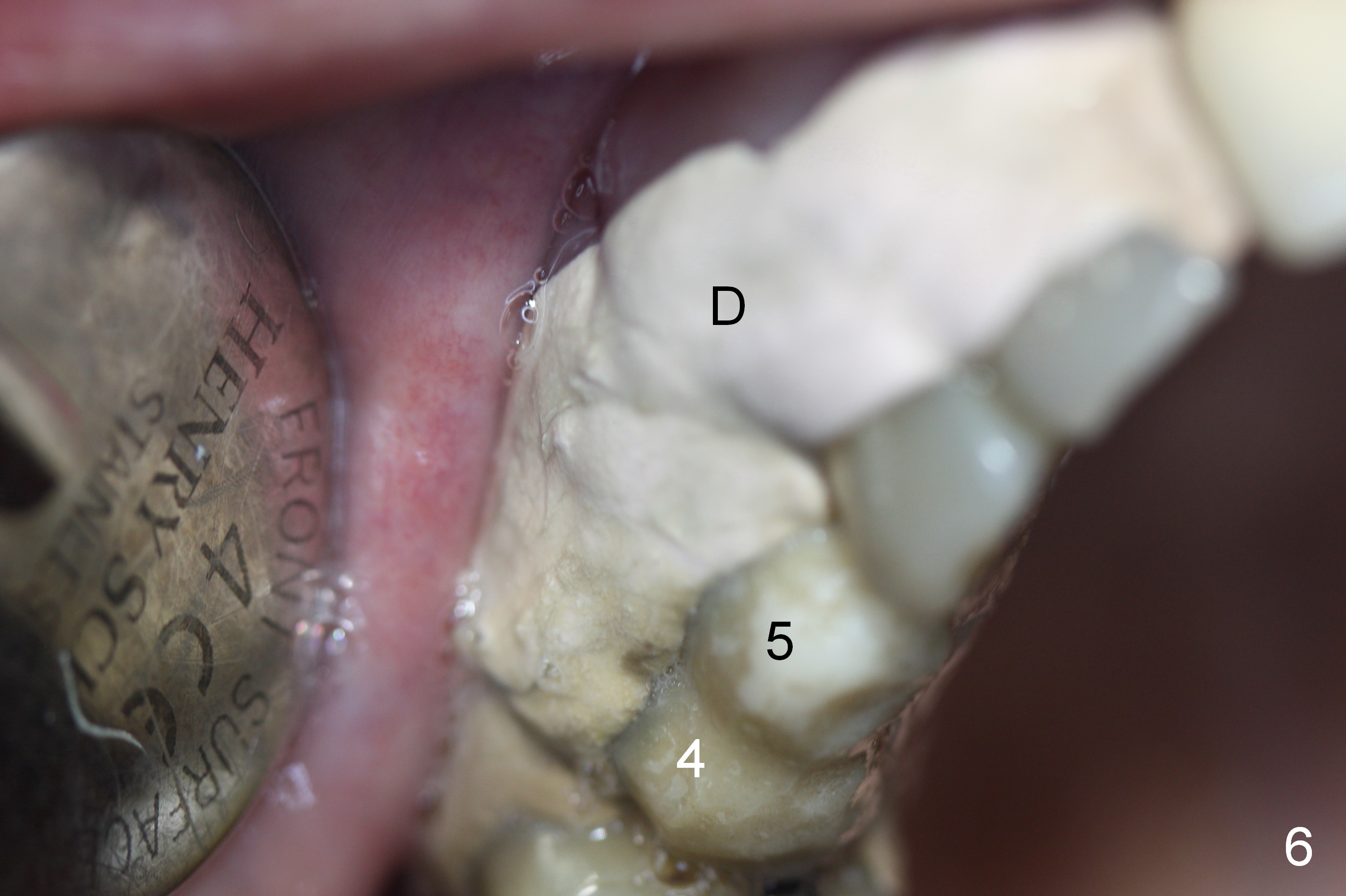
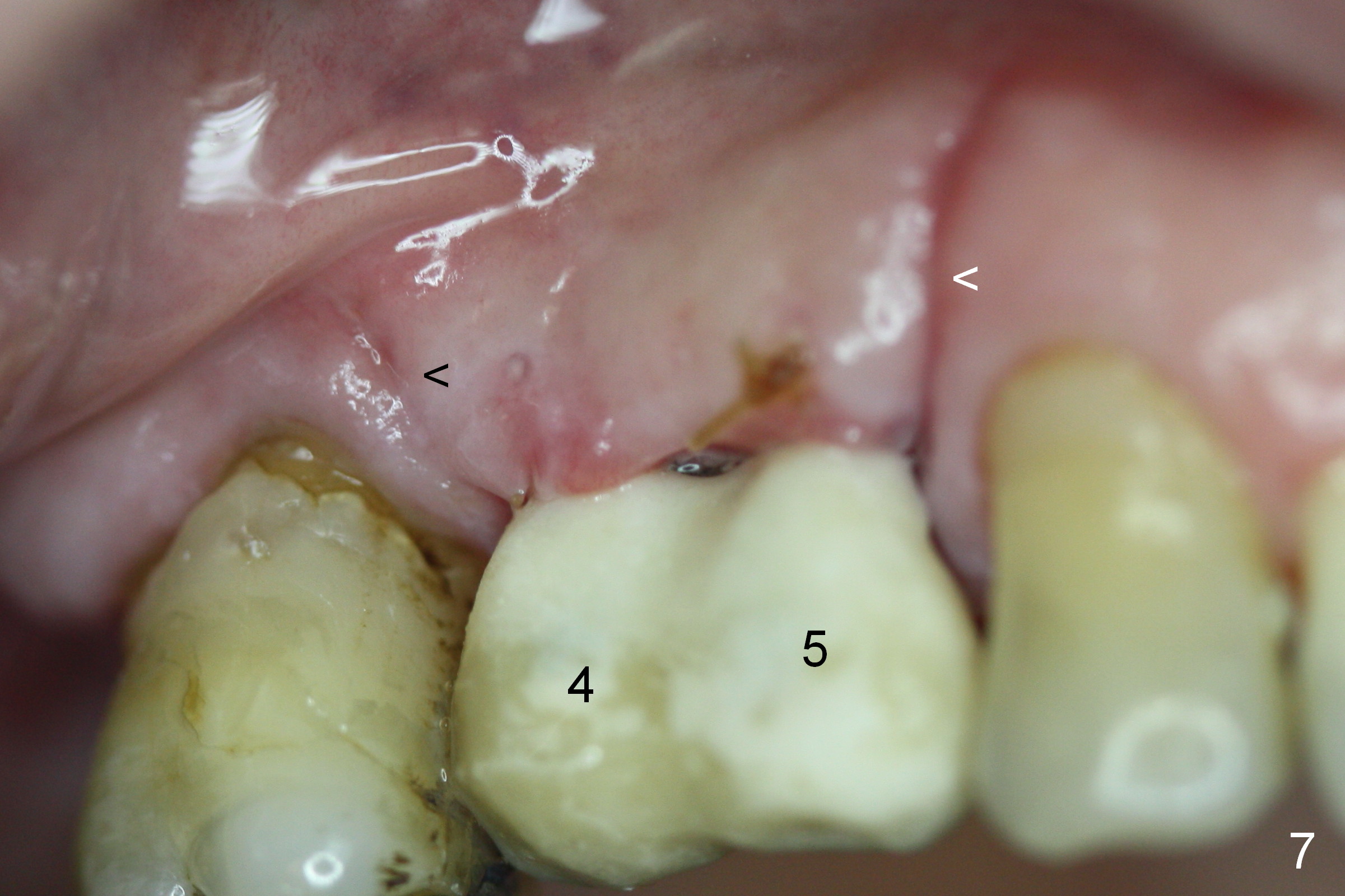
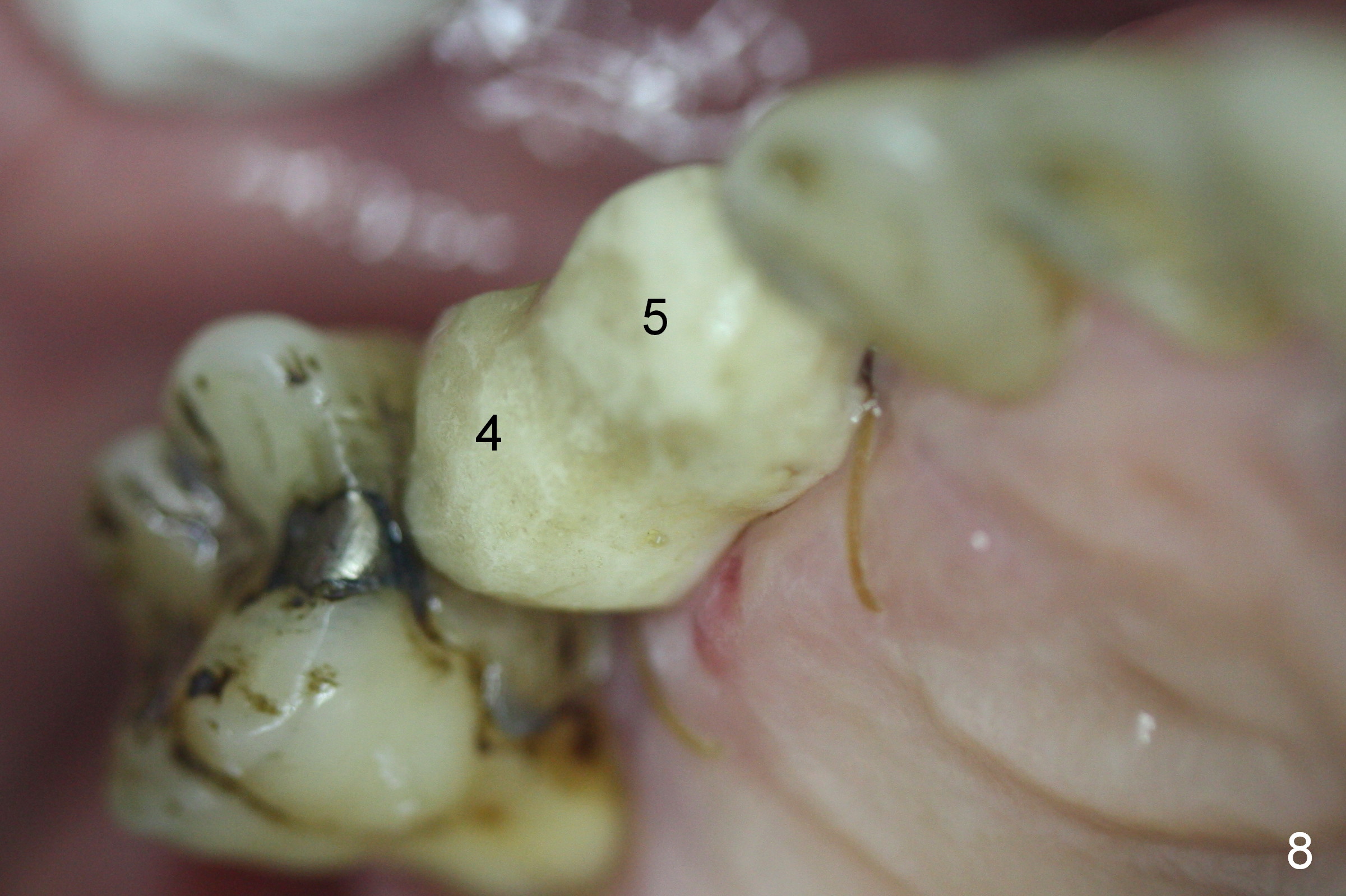
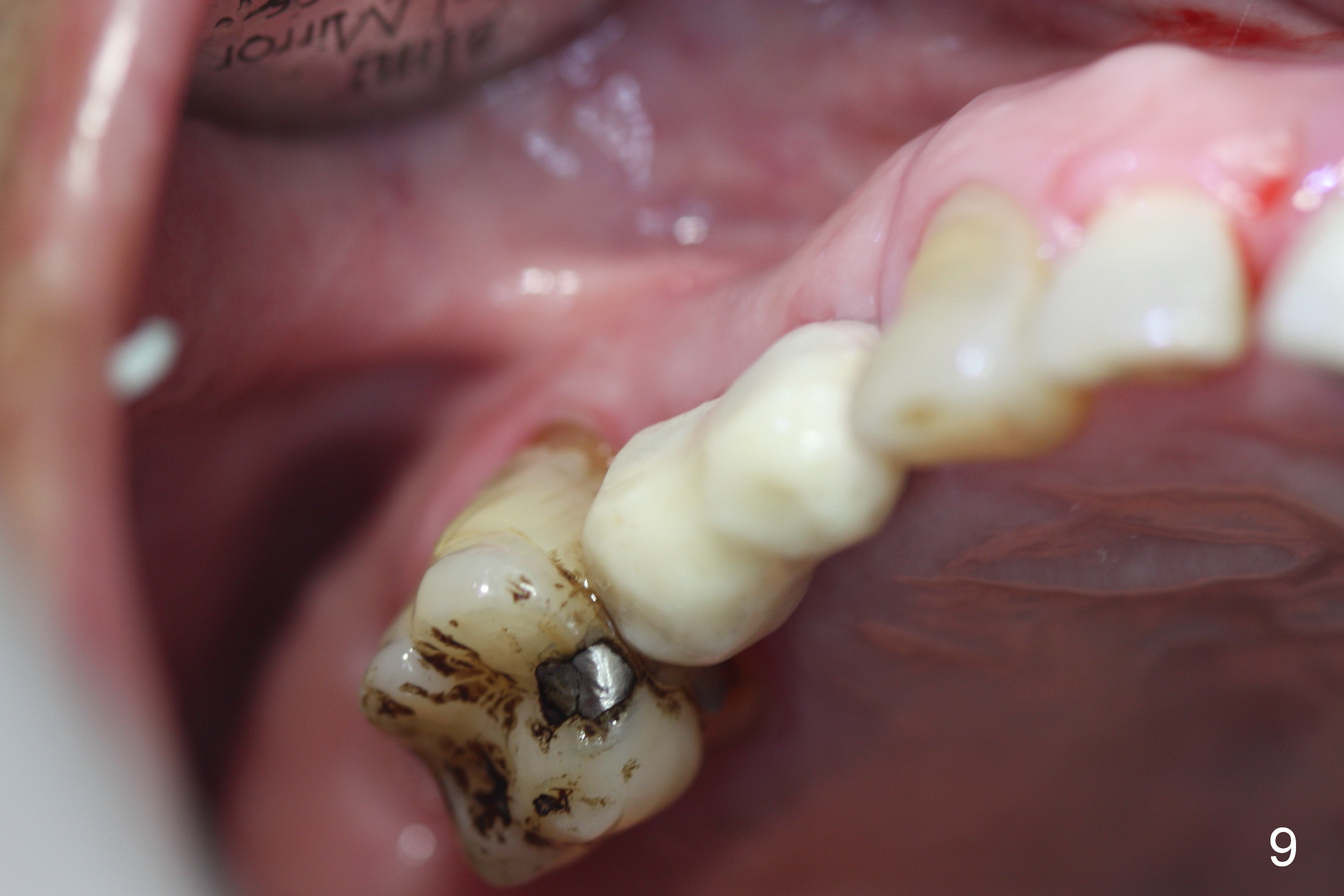
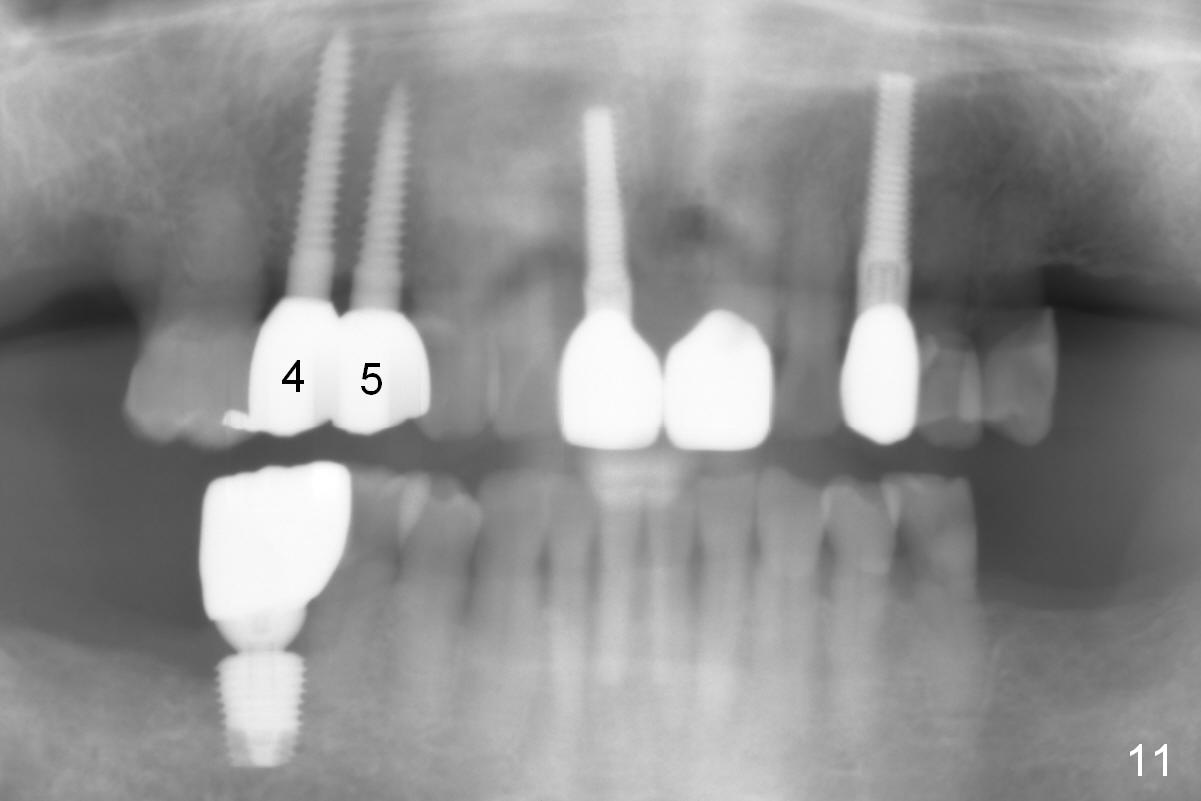
Return to Upper Bicuspid Immediate Implant Posterior Immediate Provisional
1-Piece
Two of 1-Piece for 1 Bicuspid
Xin Wei, DDS, PhD, MS 1st edition 07/24/2015, last revision 06/02/2018
 |
 |
 |
|
 |
 |
 |
 |
 |
 |
 |
|
 |
Return to Upper Bicuspid Immediate Implant Posterior Immediate Provisional 1-Piece
Two of 1-Piece for 1 Bicuspid Xin Wei, DDS, PhD, MS 1st edition 07/24/2015, last revision 06/02/2018 |
||
How to Achieve Primary Stability of 1 Piece Implants in Low Density Bone?
Clinically, the mesiodistal dimension of the upper right premolar edentulous area is not as narrow as what X-ray indicates (Fig.1). Equally critical is the narrow buccopalatal dimension.
Initial osteotomy is created by a 2 mm pilot drill 12 mm deep (Fig.2). After removing the shorter parallel pin in Fig.2, osteotomy at the site of #4 extends to 14 mm, followed by 2.6 mm (14 mm deep) and 3.0 mm (7 mm deep) expanders. Both of them are stable, but a 3.5x17 mm tissue-level 1 piece implant has less than 15 Ncm insertion torque. The implant is then placed at the site of #5 with insertion torque between 40 and 45 Ncm (Fig.3: #5). To achieve primary stability at the site of #4, the osteotomy is extended to 17 mm with the 2 mm pilot drill (Fig.3: #4). The insertion torque of the 3.5x20 mm 1 piece implant is between 35 and 40 Ncm (Fig.4,5).
For 1 piece implant(s), an immediate provisional has to be provided. Splinting is more favorable to overcome relatively low torque value. The occlusal table is fabricated as small as possible.
To obtain high value of torque for 3.5 mm 1 piece implant in low density bone, the osteotomy should be made with 2 mm pilot drill for a depth 2-4 mm short.
Perio dressing remains in place 7 days postop (Fig.6: D). Its retention is probably due to the presence of the stable splinting provisional (#4,5). When the perio dressing is removed, both the buccal (Fig.7 arrowheads) and palatal (Fig.8) wounds are found to be healing. It appears that the perio dressing helps wound healing and reduces postop pain. Fig.9 shows the provisional 20 days postop.
There is minimal bone loss 3 months postop (Fig.10). The splinted provisional remains stable. No threads are outside of the bone 9 months post cementation (Fig.11). Clinically there is no gingival recession at 4, 5, 8, 11 or 30.